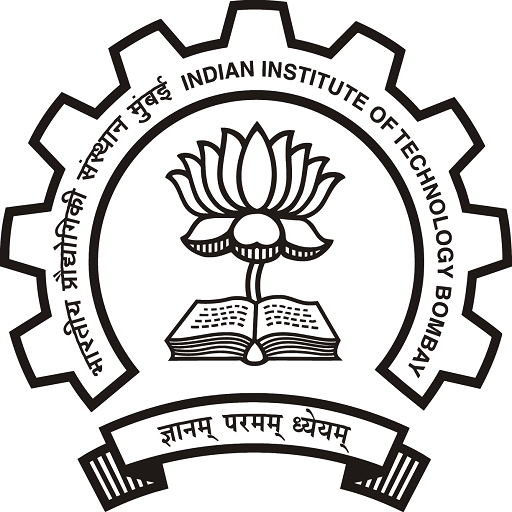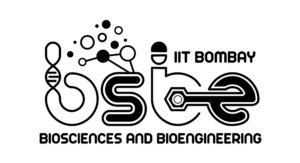Ghosh, S.K.
Dr. Santanu Kumar Ghosh
Professor
Phone: +(91-22) 2576 7766
E-mail: santanughosh [at] iitb.ac.in
Location: Room No. 303, BSBE Building
Lab web page

Research Interest
- Understanding mechanism of faithful chromosome segregation during meiotic cell division.
- Functional studies of different regulatory factors involved in vegetative cell division.
- Exploring 2 micron plasmid biology to study fundamental biological processes like chromatin organization and post translational protein modifications.
- Epigenetic and genetic factors that influence Candida life cycle.
Academic Background
- B.Sc (Agriculture), 1994: Bidhan Chandra Krishi Viswavidyalaya, WB, India
- M.Sc (Biotechnology), 1996: Madurai Kamaraj University, TN, India
- Ph.D. , 2002: Jadavpur University (work done in Bose Institute), Kolkata, WB, India
Teaching (current)
- Introduction to Cell and Molecular Biology, Cell Biology, Epigenetics and Cell Cycle, Lab course in Analytical Biochemistry
Professional Experience
- Jun 2002 – Aug2003: Postdoctoral Fellow, Bose Institute, Kolkata, WB, India
- Sept 2003 – Aug 2006: Postdoctoral Fellow, University of Texas at Austin, USA
- Sept 2006 – Jan 2009: Research Associate, University of Texas at Austin, USA
- Feb 2009 – Sept 2014: Assistant Professor, IIT Bombay, India
- Oct 2014 – Nov 2018: Associate Professor, IIT Bombay, India
- Dec 2018 – till date: Professor, IIT Bombay, India
Awards
- Post doctoral fellowship, NIH, USA – 2003 – 2009
- Post doctoral fellowship, CSIR, India – 2001 – 2003
- Council of Scientific and Industrial Research (CSIR- NET) Fellowship (JRF and SRF), Govt. Of India, 1996 to 2001
- Dept of Biotechnology Fellowship, Govt. of India, 1994 to 1996
- Junior Fellowship (JFS) in Biochemistry, Indian Council of Agricultural Research, Delhi, 1994
- University Merrit Fellowship, Govt. of India, Bidhan Chandra Agricultural University, 1989 to 1993
Selected Publications
- Anbalagan G.K#, Agarwal P# and Ghosh S.K. Evidence of 14-3-3 proteins contributing to kinetochore integrity and chromosome congression during mitosis. Journal of Cell Science Jul 2024 (in press). # equal contribution.
- Ma CH#, Kumar D#, Jayaram M, Ghosh SK*, Iyer VR*. The selfish yeast plasmid exploits a SWI/SNF-type chromatin remodelling complex for hitchhiking on chromosomes and ensuring high-fidelity propagati. PLoS Genetics 2023. Oct 9;19(10):e1010986. # equal contribution; * co-corresponding authors
- Shah S, Mittal P, Kumar D, Mittal A, and Ghosh SK. Evidence of kinesin motors involved in stable kinetochore assembly during early meiosis. Molecular Biology of the Cell 2023 Oct 1;34(11):ar107.
- Sane A, Sridhar S, Sanyal K and Ghosh SK. Shugoshin ensures maintenance of the spindle assembly checkpoint response and efficient spindle disassembly. Molecular Microbiology 2021, Aug, https://doi.org/10.1111/mmi.14796
- Kumar D, Prajapati HK, Mahilkar A, Ma CH, Mittal P, Jayaram M and Ghosh S.K. The selfish yeast plasmid utilizes the condensin complex and condensed chromatin for faithful partitioning. PLOS Genetics 2021, Jul 16;17(7).
- Balachandra VK, Verma J, Shankar M, Tucey TM, Traven A, Schittenhelm RB, and Ghosh S.K. The RSC (Remodels the Structure of Chromatin) complex of Candida albicans shows compositional divergence with distinct roles in regulating pathogenic traits. PLOS Genetics 2020 Nov 5; 16(11).
- Mittal P, Trakroo D, Chauhan A, Shah S and Ghosh S.K. 2019. Outer kinetochore protein Dam1 promotes centromere clustering in parallel with Slk19 in budding yeast. Chromosoma Feb. 128: 133.
- Mittal P, Ghule K, Trakroo D, Prajapati P and Ghosh S.K. 2020. Meiosis-specific functions of kinesin motors in cohesin removal and maintenance of chromosome integrity in budding yeast. Molecular and Cellular Biology Jan 21. doi: 10.1128/MCB.00386-19.
- Prajapati, H.K., Agarwal, M., Mittal, P., and Ghosh, S.K. 2018. Evidence of Zip1 Promoting Sister Kinetochore Mono-orientation During Meiosis in Budding Yeast. G3 (Bethesda) 8, 3691-3701. # Cover page article.
- Rizvi, S.M., H.K. Prajapati, P. Nag, Ghosh S.K. 2017. The 2 micron plasmid encoded protein Raf1 regulates both stability and copy number of the plasmid by blocking the formation of the Rep1-Rep2 repressor complex. Nucleic Acids Research. Jul 7;45(12):7167-7179.
- Prajapati H, Azhar RSM, Rathode I, Ghosh S.K. 2017. Microtubule-associated proteins, Bik1 and Bim1 are required for faithful partitioning of the endogenous 2 micron plasmids in budding yeast. Molecular Microbiology. 103: 1046-1064.
- Agarwal M, Mehta GD, Ghosh S.K. 2015. Role of Ctf3 and COMA subcomplexes in meiosis: implication in maintaining Cse4 at the centromere and numeric spindle poles. BBA Molecular Cell Research. Mar; 1854(3):671-84.
- Mehta GD, Agarwal MP, Ghosh S.K. 2014. Functional characterization of kinetochore protein, Ctf19 in meiosis I: an implication of differential impact of Ctf19 on the assembly of mitotic and meiotic kinetochores in Saccharomyces cerevisiae. Molecular Microbiology, Mar 91(6): 1179-99.
Ongoing Projects
- Elucidating the mechanisms responsible for faithful chromosome segregation in mitosis and meiosis.
- Elucidating the epigenetic determinants of Candida biology.
- Understanding the mechanism of remarkable stability of endogenous 2 micron plasmid in budding yeast.

